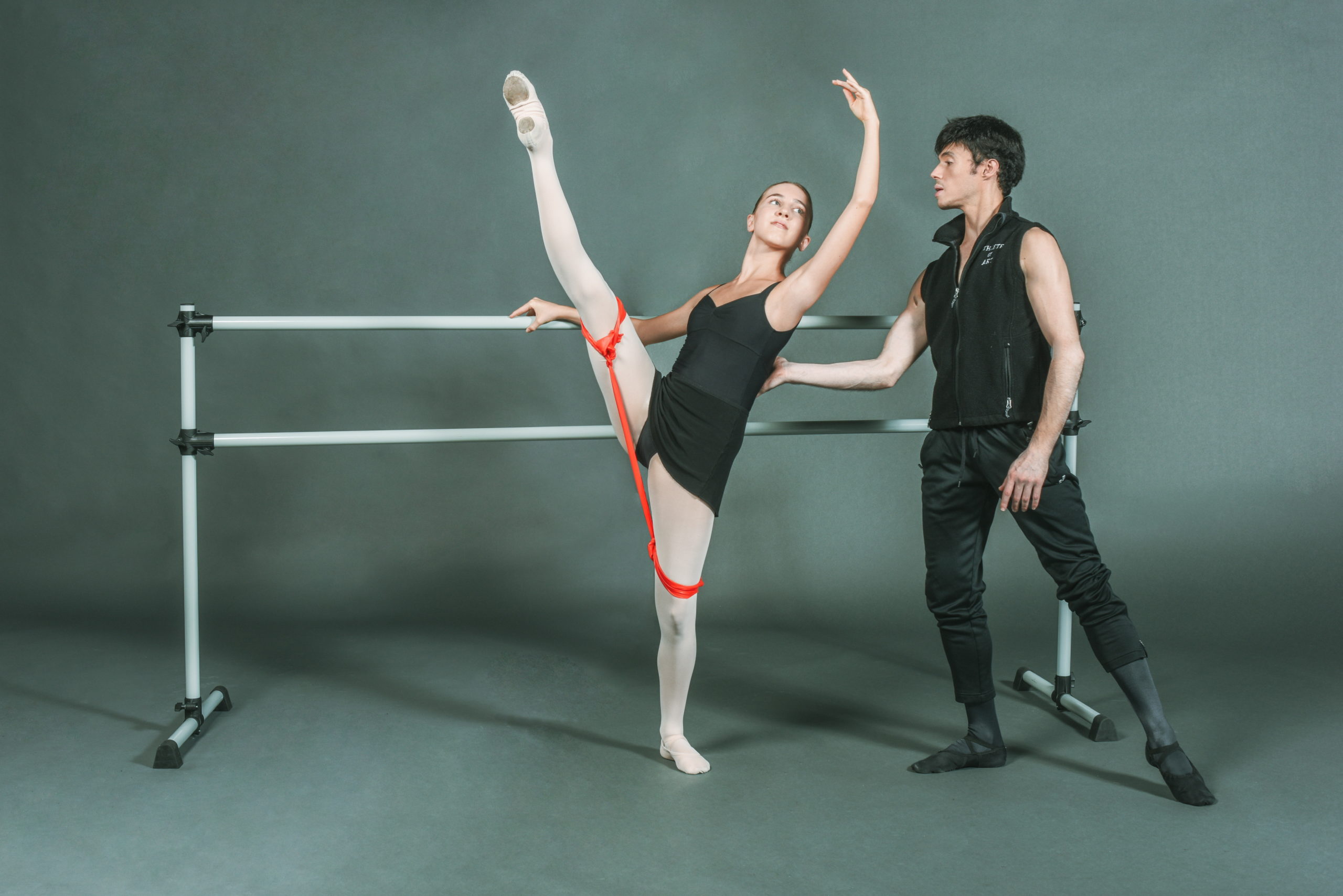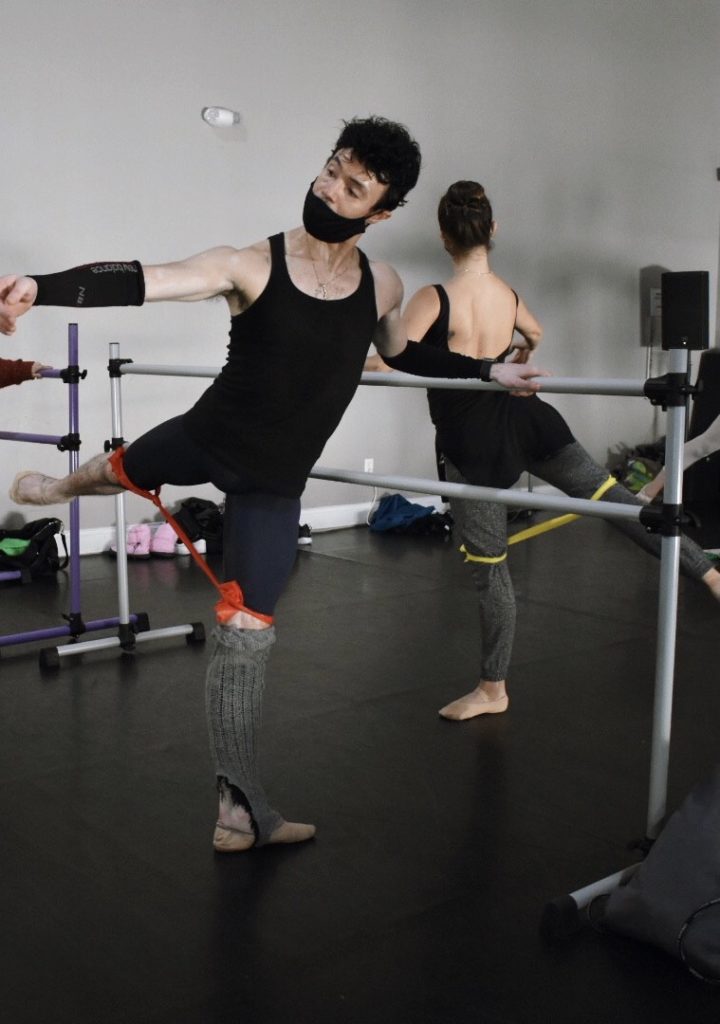
New normal…same class warm-up. It’s tempting to want to hold on to the pre-class routine you know and love (and could probably lead in your sleep). But truly “coming back stronger” to the studio requires revamping on all fronts, including how you approach preparing your students for class. After all, dancers’ needs post-pandemic are going to be very different coming back from the year-long studio hiatus, regardless of whether they kept up their training at home. It’s critical that your new-normal warm-up sufficiently prepares students for the heightened demands of in-person class, and reduces their chances of injury.
Dance Teacher got tips from two stellar teachers and a performing arts physical therapist to help you give your warm-up the summer 2021 glow-up it deserves.
Read the Room
According to Dr. Danelle Dickson, PT, DPT, OCS, and Owner of Performance Plus Physical Therapy in Washington D.C., there are two main pieces of information to take into account when building your warm-up: where your dancers are starting from and what level of physical load will be expected from them in class. Discovering these key insights requires communication. “The difference between a good teacher and a great teacher is the ability to really listen and adjust to a class,” says Dr. Dickson. Rather than going in knowing exactly what warm-up you’re going to run through, be prepared to ask, listen and adapt your routine in real time. According to Dr. Dickson, some good questions to ask include how long your dancers have been back in-studio, what kinds of styles they’ve been training in and how often, and whether they’re up for working on whatever you had in mind as your focus for the class. “Encourage dancers to pay attention to the signals their bodies are giving them, and provide options to move forward or scale back depending on how they’re feeling,” Dr. Dickson says. This could include switching gears to focus more on gentle active stretching, or adding extra strengthening exercises to target specific muscles.
Divide and Conquer
Adapting aside, it still makes sense to have a plan for your warm-up. According to Dr. Dickson, that template should consist of cardio, strength exercises and dynamic stretching. But that doesn’t mean your warm-up has to be excessively long.
As the term would imply, the most important function of your warm-up should be getting dancers’ muscles warm so they’re ready to work. Chip Abbott, choreographer and long-time faculty member of Broadway Dance Center and Steps on Broadway in New York City, always starts his class with HIIT-style cardio moves, like jumping lunges, running in place and jumping jacks, to get the largest muscle groups in the body firing. Regardless of what moves you use, aim for at least three minutes of steady-state cardio that leaves your dancers out of breath but not exhausted.
The next component according to Dr. Dickson, strength and conditioning, should have the goal of preparing the musculoskeletal system for the unique demands of class ahead, whether that’s a workshop on pirouettes or a high-energy combo with lots of floorwork.
Abbott opts to lead dancers through technique-based movements, like slow, controlled relevés and passé balances, to fire up the calves, glutes, quads and hamstrings. “There’s this misconception that if we work those muscle groups, we’ll get ‘bulky.’ But it’s kind of impossible to dance well without strengthening those,” he says. He’ll also cycle through a series of yoga-inspired poses, including warrior and flat-backs, that target the abdominals and lats.

Even the tried-and-true ballet barre warm-up can benefit from some small, strength-based tweaks. Joseph Gatti, artistic director and founder of United Ballet Theatre Company and Academy in Orlando, Florida, will sometimes opt for a quick floor-barre beforehand to work on firing up dancers’ rotator muscles. He also incorporates TheraBands, typically wrapped around the dancers’ legs just above the knee, into his barre exercises to give his students extra resistance that will “challenge their length, without sacrificing the placement of the hips.”
If your dancers are struggling to keep up with the strength portion of your warm-up, it’s likely that they need to step up their cross-training outside of class to improve their strength and endurance in general. According to Dr. Dickson, “There are specific muscles dancers consistently under-train, including the abdominals, the hip flexor muscles that really stabilize the pelvis, and the glutes, which are important for power and force that we need to push ourselves off the ground for jumps and turns.” As you incorporate exercises targeting these muscles into your warm-up, encourage your dancers to continue working on them outside of class. “This challenges your dancers to actively think about what their bodies need for them to improve, which is great because you’re not going to be their teacher forever,” Dr. Dickson says.
Stretch Dynamically
Finally, the last portion of your warm-up should be reserved for stretching—but not the kind where you put on Bon Iver and let your students fall asleep in their middle splits. Dr. Dickson recommends dynamic stretches like hip swings, lunges or leg swings, which allow dancers to move through their maximum range of motion while minimizing the risk of injury or overstretching. Abbott agrees, and he’ll usually stick to standing stretches, like lunges, bending over in second position, and holding each leg in a quad stretch.
Teaching your dancers how to stretch correctly is essential for your warm-up to have its intended effect. Start conveying that information now so dancers can practice applying it throughout the rest of class. “An important concept to me in dance is circular energy: making sure dancers are shooting energy down into the floor, as well as up and out,” Abbott says. “That’s how we’re going to be able to hit strong accents, and look supported when we dance.” While his dancers are stretching, Abbott says, he usually turns down the music and makes sure each dancer on the screen or in the studio is moving through the correct positions with this concept in mind, especially if they’re beginners.
Quality, Not Quantity
Undeniably, warming up properly is going to take up a solid chunk of class time—at the very least 10 minutes, according to Dr. Dickson. But Gatti emphasizes that it’s better to cut class short than rush through the careful order of exercises you’ve planned, both in warm-ups and throughout. “If you don’t get all the way to grand allégro in every class, that’s OK,” he says. “It’s exactly like how you wouldn’t go to the gym and work your biceps every single day. Sometimes it’s nice to have a day or two to recover and focus on other things.”
What About a Cooldown?
In a perfect dance world, teachers would have ample time to lead a proper warm-up, teach class and finish with a leisurely cooldown. “New normal” or not, however, class time remains in short supply. If you’ve run out of minutes to lead dancers through a collective end-of-class cooldown, Dr. Dickson strongly recommends instructing your students on the benefits of doing their own. Walking in place, dynamic stretching and static stretches held for about 30 seconds on each side are all components of a proper cooldown. “Taking the time to lower the heart rate and stretch after class decreases the delayed onset muscle soreness (DOMS) that can stop dancers from performing their best the following day,” she says. “Think of your cooldown as a way of already preparing for your next class.”
Set Dancers Up for Success Beyond Class
Curating a thoughtful warm-up for your dancers will not only help them get the most out of your class, it will also equip them with the knowledge they need to prepare themselves adequately in any situation. “Out of everything in class, a great warm-up is the most transferable to your dance career,” says Abbott. “The ability to warm up your body within any amount of time, from 10 minutes to an hour, is such an important skill to learn.” Similarly, Gatti emphasizes the value of educating students on proper warm-up practices. “Giving that knowledge to students will help them avoid a career of constant pain and injury, ensuring for them instead a long, healthy path in dance.”




